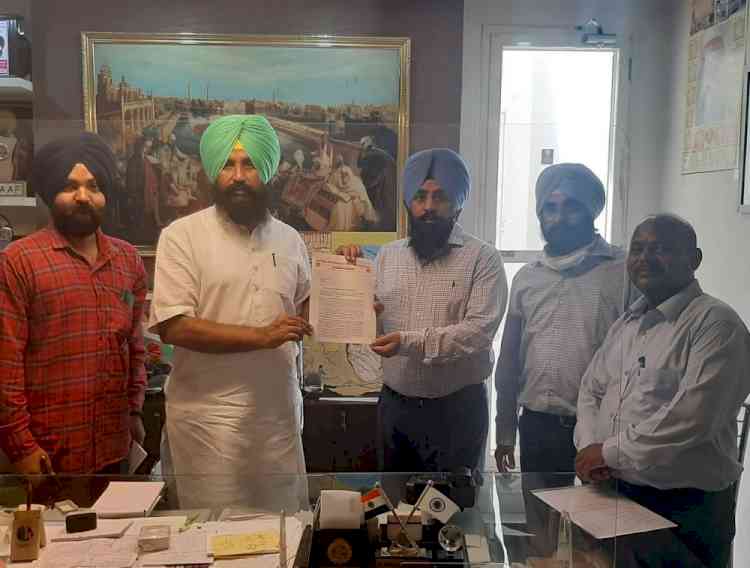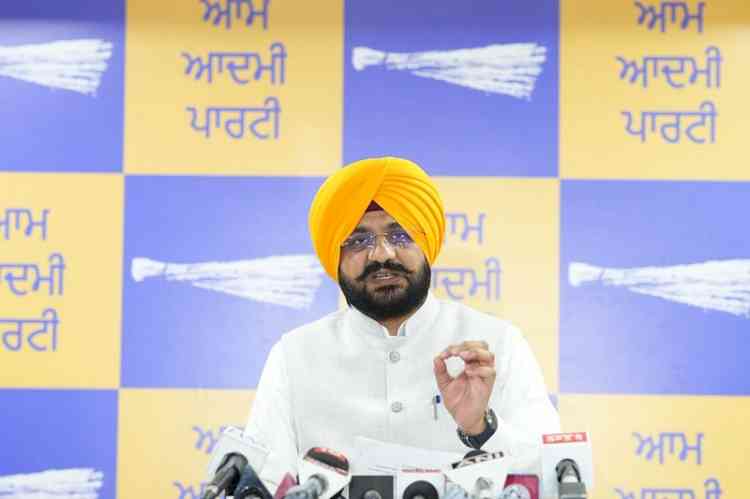NZIEA meets Lok Insaaf Party Supremo Simarjeet Singh Bains, and hands over memorandum against proposed IPO in LIC
Says move to sell equity of LIC by GoI will severely impact economy and vulnerable sections of Indian people

Ludhiana: Today, office-bearers of NZIEA- Northern Zone Insurance Employees Association, a Leading Association of LIC Employees', under the leadership of Amarjit Singh, Divisional Secretary Ludhiana Division met Lok Insaaf Party Supremo Simarjeet Singh Bains, and handed over the memorandum to him against their opposition to the proposed IPO in LIC.
The delegation said that recently when the nation has celebrated the 64th anniversary of the most successful public sector financial institution. There are serious concerns on its very foundational objectives and character; whether LIC will remain 100 percent government owned or the government will dilute its equity holding through initial public offering (IPO) . The Union Finance Minister announced during her second Budget Speech on February 01 that the government will list LIC in the stock exchange and sell part of its stake via Initial Public Offer (IPO). The advisor to guide the government on issues relating to IPO has already been finalised. It is expected to raise between Rs. 80-100 thousand crore by selling around 10 percent of its equity holding. They said that LIC has helped the nation industrialise at a rapid pace. With a capital of Rs.5 crore which was raised to Rs.100 crore in 2011, LIC was performing spectacularly well even in these troubled times. LIC has emerged as the single largest institutional investor in the Indian economy, with a customer base of over 40 crore. The LIC has registered a growth of 25.17% in its first year premium by mobilising highest ever figure of Rs.1,77,977.07 crore in the financial year 2019-20. LIC’s Pension and Group Business created a history by crossing the magical figure of one lakh crore and mobilising Rs.1,26,696.21 crore and showing a growth of 39.46%. The Corporation collected a total premium income of Rs. 3,79,062.56 crore in the financial year clocking a growth rate of 12.42%. The LIC’s gross total income grew to Rs. 6,15,882.94 crore showing a growth of 9.83%. Total Assets of the Corporation stood at Rs. 31,96,214.81 crore as at 31.03.2020.. It generates annually around Rs. 4 lakh crore as investible fund. The LIC has an unmatched claim settlement record. This great institution has grown and expanded by generating internal resources without any additional capital from the government. . It is the largest life insurance company in the world in terms of number of policies. Even after over two decades of competition in the life insurance business, the LIC stands tall with a market share of more than 73 per cent. The LIC has the proud distinction of contributing more than 25 per cent to the total budgetary efforts of the government of India. The LIC has recently paid a dividend of Rs.2611 crore to the government of India against an initial equity of Rs.100 crore. the total dividend paid by LIC till date since its inception is a huge Rs.26,005.38 crore
Against the arguments for IPO, they further informed that the LIC has always been accountable to the nation through parliament with an unblemished record of protecting the interests of the policyholders Since it generate enormous investible surplus every year, the argument that listing will help access to capital too has no meaning. The argument that unlocking the value of LIC will benefit the Indian public is not sustainable as retail investors in stock market constitute just around 3% of the population. . The LIC is a transparent and efficient Board managed institution. It comes out with Public Disclosures every quarter. It submits Report of its functioning every month to the Regulator IRDAI. They further said that Listing of LIC will amount to wanton destruction of the premier public sector financial institution in the country. The LIC mobilises small savings of the people and makes them available for national development, as domestic savings play a very important role in the national economies and many economists worldwide hold the view that foreign capital is a poor substitute for domestic savings. In a situation where the country needs huge resources for development, it is necessary the government should exercise control over the domestic and more importantly the household savings. The vision of Atmanirbhar Bharat of the Prime Minister can be successful only when an institution which generates enormous investible surplus every year must remain hundred percent under government control.
They impressed upon Bains that the move to sell the equity of LIC by Government of India will severely impact the economy and vulnerable sections of the Indian people. The social objective of providing insurance cover to the weaker sections will receive a set-back. The aim to expand insurance in the unprofitable rural areas too will suffer. Hence disturbing the character of LIC will ultimately harm the interests of the national economy and the poorer sections of the Indian population.


 cityairnews
cityairnews 










